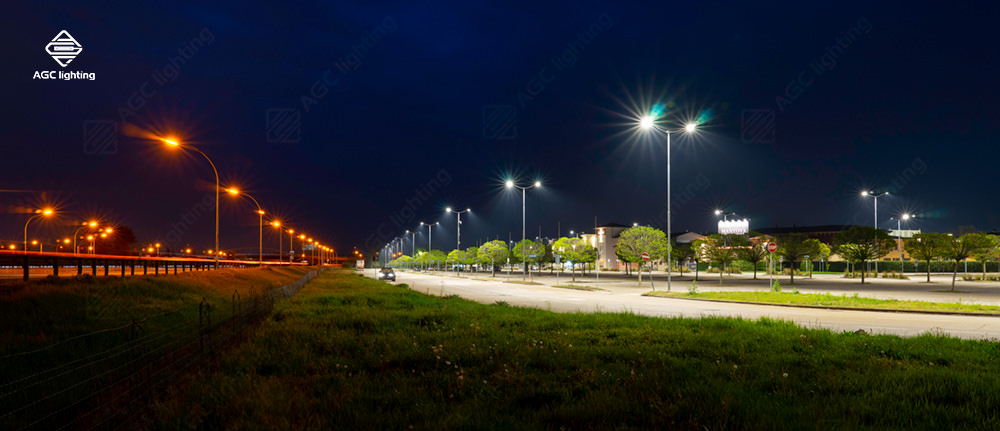As one of the most important parts of public infrastructure, streetlights are critical for the safety of pedestrians and drivers at night. Streetlights brighten the streets, roadways, and pathways, reducing criminals. Moreover, streetlights increase people's visibility, allowing them to view possible obstacles clearly and avoid accidents.
With the advanced LED technology, more and more cities across the world are replacing traditional streetlights with efficient LEDs to save energy and maintenance costs. Then, a white color is more common in street lighting than yellow. Although LED streetlights are beneficial, various studies claim that LED streetlights are harmful to human health and the environment. Is that true? Let’s figure it out.
Benefits of LED streetlights
LED streetlights are prevalent in many cities, and their benefits are well-known. Here, we show some of the main benefits of LED streetlights compared to traditional streetlights.
- LED streetlights are long-lasting. They have a longer lifespan and require less maintenance.
- LED streetlights are energy-efficient. They consume less energy to emit the same amount of light. It means LED streetlights have a positive impact on reducing carbon footprints as well as energy costs.
- LED streetlights generate less heat. It means LED streetlights convert more electricity into light instead of heat. Also saving energy consumption.
- LED streetlights can be integrated with smart sensors and controls for flexible control and greater savings on energy costs.

Problems with LED streetlights
LED streetlights are popular due to their higher efficiency, longer lifespan, and lower maintenance. Various studies, however, show that LED streetlights are not as great as previously thought. According to the AMA (American Medical Association), there are two problems with white LED streetlights. One is the possible discomfort and glare. The other is the effect on circadian rhythms of both humans and wildlife.
Glare and discomfort
LED streetlights emit a wider range of frequencies than traditional light sources, including short-wavelength blue light. AMA suggests that LED streetlights with high Kelvin values contain high amounts of blue light. Kelvin is the unit of CCT (Correlated Color Temperature). The color temperature scale is used to categorize the color of light emitted by other light sources, regardless of their temperature. Light at 2700 - 3000K looks yellow and is called “warm light”, while light over 5000K appears white and is called “cool white”.

LED streetlights with a CCT of 5000K can cause discomfort and glare. The high blue light content can cause severe glare, eventually resulting in pupilary constriction in the eyes. High levels of blue light can damage the retina as well. This increases the risk of accidents when driving or walking at night.
Effect on circadian rhythm
Except for glare and discomfort, white LED streetlights also have impacts on humans and wildlife.
The natural light color changes with time throughout the day. The light is warm white at sunrise. Then, the color of the light becomes cooler and changes to natural white in the afternoon. Eventually, it turns to ultra warm white at dusk. Physical, mental, and behavioral changes of humans follow this 24-hour cycle. However, white LED streetlights can disrupt our circadian rhythm and then affect human health and well-being. Long-term exposure to white LED streetlights will disrupt our biological clock.
LED streetlights can also damage the circadian rhythms of wildlife. The broad spectrum emitted by LED streetlights will disrupt wildlife's biological processes. Take the lighting for sea turtles as an example. Sea turtles are nocturnal animals, and they are active at night. They are also sensitive to the light with wavelengths lees than 580 nm. But the bright and short wavelength of LED streetlights alters the normal behaviour of adult sea turtles from natural light and reduces their population.
Solutions to healthy lighting
For healthy streetlights, the AMA recommends dimming and cooling them. Here are the three detailed recommendations for safer street lighting solutions:
- Support the proper conversion to community based LED lighting solutions, which reduce energy consumption and minimize the use of fossil fuels.
- Encourage minimizing and controlling blue-rich environmental lighting by using the lowest emission of blue light to reduce glare.
- Encourage the use of 3000K or lower LED streetlights for outdoor installations. All LED lighting should be properly shielded and covered to minimize glare and detrimental effects on humans and the environment. Besides, LED lighting should be dimmable for off-peak periods.
LED streetlights are not bad
From the benefits of LED streetlights, we can know that LED streetlights themselves are not bad by any means. Blue light is common to all broad-spectrum or white light sources. We don't yet know what the actual health risks of blue light are.
To minimize the risk of glare, discomfort, and disruption of circadian rhythms, as well as to achieve higher energy efficiency, choosing the right LED streetlights is critical.
Properly designed LED streetlights can achieve high energy efficiency and minimal detrimental effects on humans and wildlife. They can be easily dimmed and integrated with sensors and controls for smart lighting systems that reduce energy costs and light pollution. Furthermore, most LED streetlights come with optional CCT, including warm white. Since warm white LED streetlights contain less blue light, glare and visual discomfort can be minimized.












